Restoring Safe Ground in Burma
19 August 2025
Shan State and Karenni State, Burma
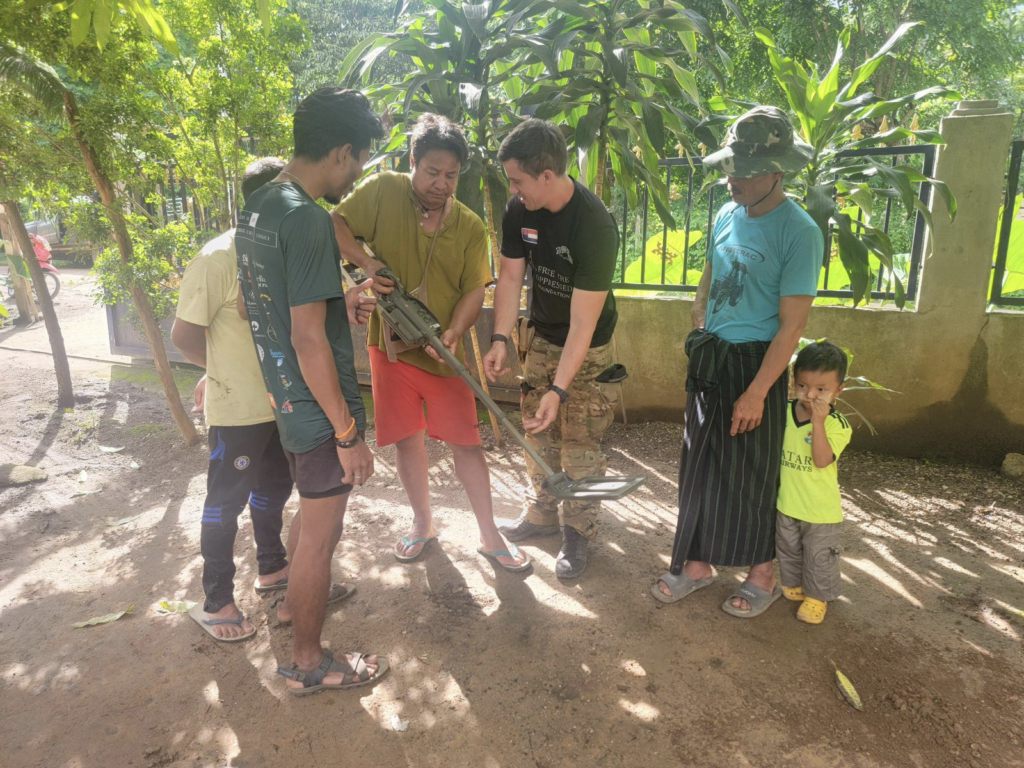
As families chased from their homes by the Burma Army return to their villages, hidden mines still threaten homes, churches, and fields. The Free Burma Rangers (FBR) are working with local volunteer deminers under civilian authority to train communities, improve detection, and get the gear needed to make the land safe again.
Since the 2021 military coup, landmines have become one of the deadliest threats facing civilians in Burma. In Karenni and southern Shan state alone, there have been 205 recorded landmine incidents since that time, with actual numbers likely far greater due to underreporting. Burma now has one of the highest landmine casualty rates globally. Mines are planted in homes, churches, paths, rice fields, and at water sources, deliberately designed to terrorize and displace. Tragically, more than twenty percent of the victims are children.
In June 2025, our FBR team traveled to Thay Su Let Village in Karenni State, an area once occupied by the Burma Army and still littered with landmines.
Why This Matters Now – by the numbers
1In 2023, Myanmar recorded more than 1,000 landmine/ERW casualties—the highest total of any country according to Landmine Monitor 2024. The United Nations International Children’s Emergency Fund’s (UNICEF) parallel monitoring lists 1,052 casualties that year with children representing roughly 20 percent of victims. Differences reflect data sources and methods; both confirm extreme harm. 2In 2024, casualties stayed very high: 692 in the first six months, and 889 in the first nine months.
3Humanitarian clearance by outside organizations is largely not permitted in Myanmar. Operations are mostly restricted to risk education and some victim assistance. This leaves communities and local structures to carry a dangerous burden with minimal equipment. Thousands of families remain displaced or living in fear, unable to return home due to undetected landmines.
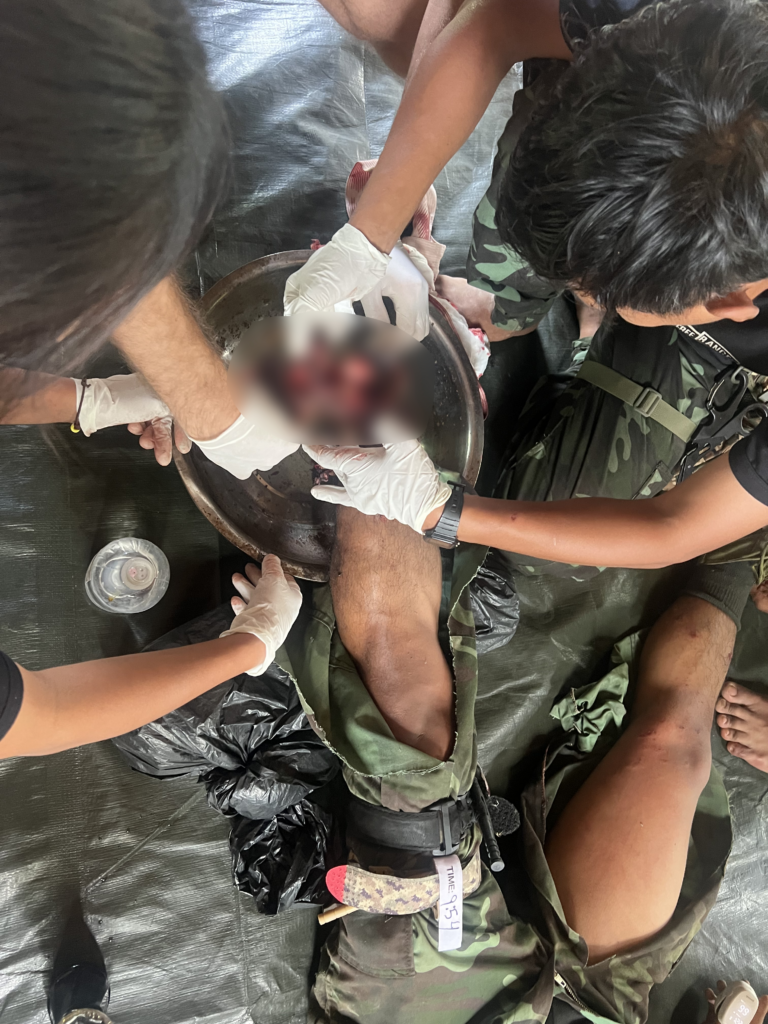
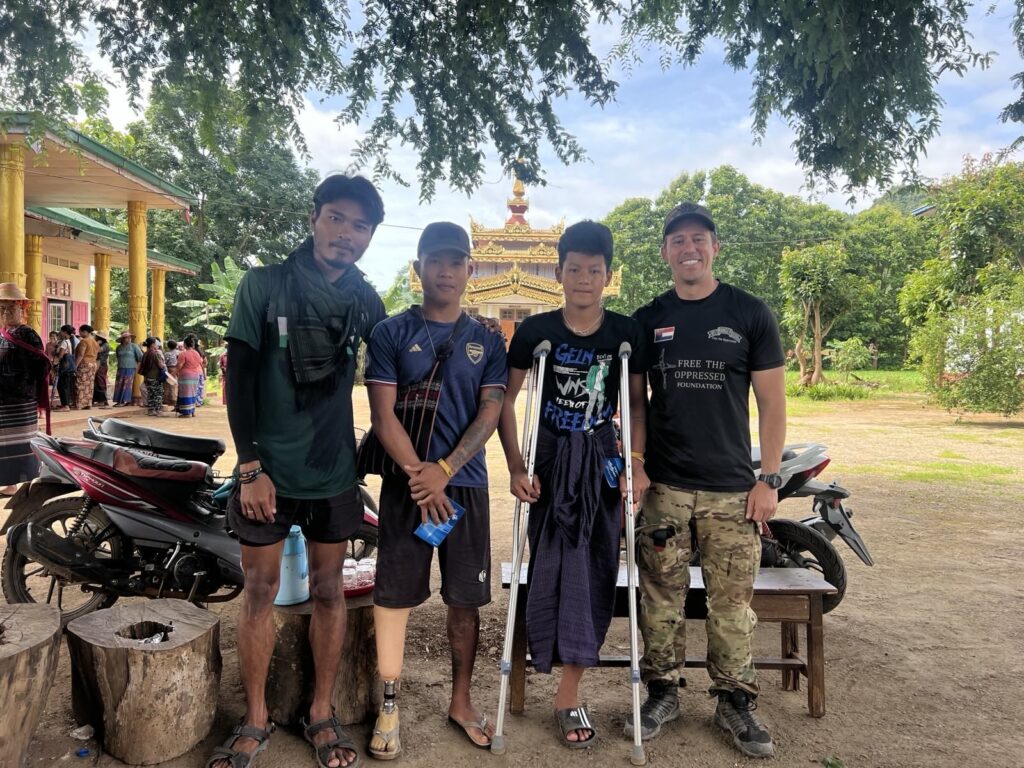
Two Snapshots from the Field
At Thay Su Let, a church worker lost his leg while trying to clear the church grounds so services could resume. He still lacks a proper prosthesis and uses a homemade device. His story is why we teach first response, marking/avoidance—and why the right equipment matters.
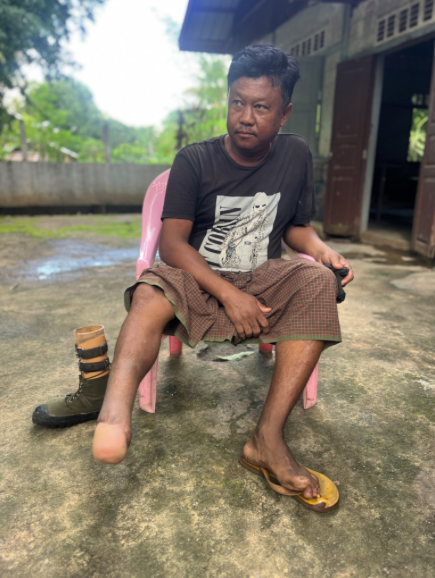
Villagers had been using a donated farming backhoe to reduce risk in wider areas. It struck a mine and was damaged. With no funds to repair it, all local clearance with that machine stopped. Without trained teams, suitable detectors, PPE, and a functioning backhoe, people can’t access their homes, churches, and fields.
Because of ongoing conflict, political barriers, and security risks, major international demining organizations are not operating in Burma. Clearance efforts are left to civilians, farmers, and ethnic resistance groups, most without training or proper equipment, using only knives, sticks, and farming tools. The Emergency and Rescue Sub-department (E&R) of the Home Affairs Department under the Karenni Interim Executive Council (KIEC), a local governing body, is trying to clear villages of mines and asked for our help.
That’s why we prayed and felt we should go.
At a church site, we began manual clearance using metal detectors, but soon discovered that our detector couldn’t detect the low-metal M14 mines, which are the most common in Burma. We stopped and prayed, asking God what to do next.
A village elder approached us, not deterred by the inabilities of our equipment, and asked that we stay and teach. We had found a major deficiency in our equipment. However, it could still detect other land mines and there were still things we could teach.
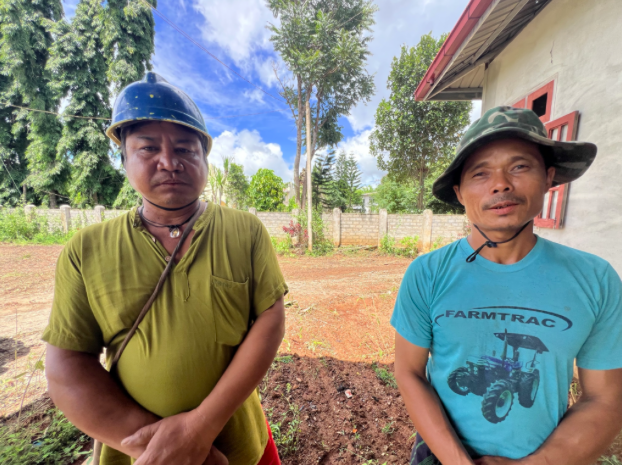
The village elder and a local farmer approached us at the church while we were trying to clear mines in a red zone, just after we had stopped to pray. Red zones are areas where the Burma Army once camped or resided, and usually have undetected mines and booby traps. The Burma Army places improvised explosive devices (IEDs) in red zone houses so as to terrorize any villagers who decide to return home. Normal procedure is to trip the IED to blow up the house if they find it before it kills or maims a villager. Disarming these IEDs is very dangerous, especially for these volunteer deminers without specialized gear and proper training, and the loss of the house is generally considered preferable to the risk of disarming the munition.
The KIEC asked us to train volunteer deminers in mine clearance. They are now leading demining efforts in their community and have asked for help to rent or purchase a backhoe, metal detectors, and protective equipment so they can continue making their village safe. Red zone areas are spread across all of Burma. These areas include Moebye, in southern Shan State, to Wari Sue Phalei Village, to Khout Pa Lout Village in western Demoso of Karenni State. And from Six-mile village to Htee Por Hso Village in eastern Hpruso Township, to Meśe, to Shan Wan Aoung Village in Meśe Township.
That day, we trained more than 15 volunteer deminers in safe mine probing and metal detector use, as well as field trauma care, which included how to apply tourniquets using triangle bandages and sticks. We also helped locals construct simple tools from scrap for safer clearance of booby traps.

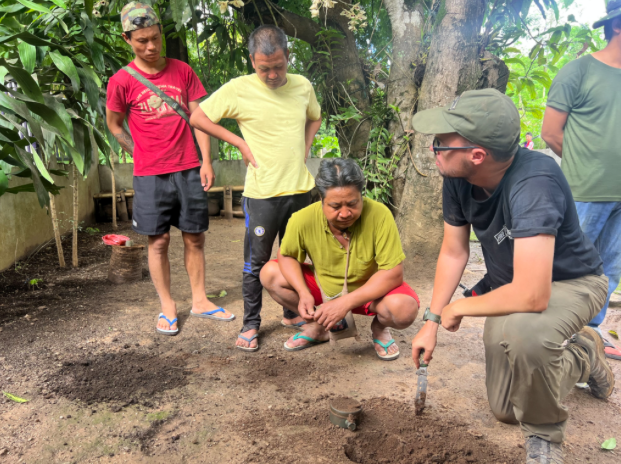
Desperation Has Taught Them Ingenuity
With little outside help, the villagers have learned to be resourceful and ingenious. They use farming backhoes to detonate mines in larger areas because it’s what they have. But when that backhoe is damaged or sent to the frontlines, clearance in villages stops.
Backhoes have proven to be the most effective and safest way to clear most mines. However, they’re very expensive and there are very few of them. Without funding for repairs, all local clearance with them must stop.
Before we left, one villager took us to what was left of his home, which was destroyed by Burma Army attacks, and now surrounded by mines.
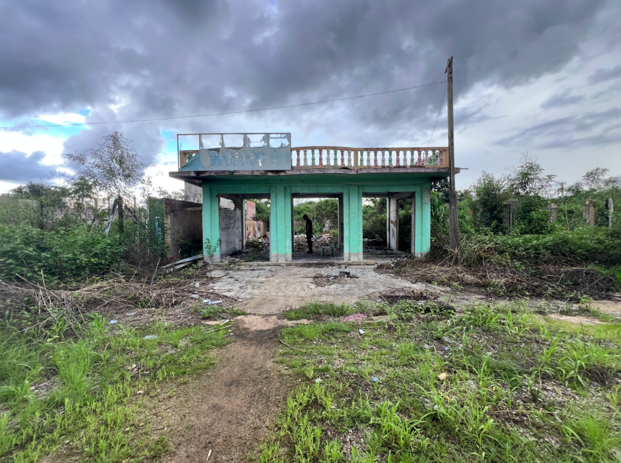
Local Leadership and Partnership
The Emergency and Rescue Sub-department (E&R) of the Home Affairs Department under the Karenni Interim Executive Council (KIEC) is responsible for detecting and removing landmines across Karenni State. They partnered with us during the Thay Su Let training and have expressed a desire to continue working with FBR to expand safe clearance efforts across the region. We are determined to start the process. Western Demoso, from Moebye to Khout Pa Lout Village and eastern Hpruso, from 6-mile to Htee Por Hso Village, will be our prioritized target areas.
Proper hook-and-line kits, protective gear, and professional tools are urgently needed to keep local responders safe.
Innovation and Technology in Clearance
In addition to manual training and community-based clearance, our team is exploring ways to leverage technology for safer and faster mine detection.
One breakthrough has been the use of drones and artificial intelligence (AI)-powered image analysis. Drones flown over mine-suspected areas, such as farmland or abandoned villages, capture high-resolution images. These images are uploaded to a server and scanned using AI software designed to spot mine-like objects on the surface. The software then tags GPS coordinates of these potential threats so that trained EOD teams can investigate or safely neutralize them.
While this method cannot detect buried or low-metal mines like the M14, it provides a valuable first layer of risk assessment; especially in wide, open areas where mines or unexploded ordinance (UXO) may still be lying in plain sight.
M14 mines, due to their low metal content, are undetectable with most standard equipment. Even after attempted clearance, these devices remain hidden. There is an urgent need for advanced metal detectors capable of locating M14 mines, backhoe repair or replacement, prosthetics for survivors, and continued training and support for village-based demining.
What’s Been Done – What’s Still Needed
Local villagers and the KIEC have done what they can to address the mine threat. We have added training to augment that, but there are still very large needs, particularly in equipment. We’re asking friends, churches, and mine‑action partners to help close these gaps so families can come home safely.
The list of needed supplies FBR received from the KIEC includes: a backhoe to safely handle wide‑area/debris work; 10 ballistic caps/helmets and 10 protective vests for basic PPE; fuel to move people and equipment for training, survey, and evacuations; a repairs fund to keep the backhoe and kit running; and 10 mine detectors capable of detecting low‑metal M14 mines, so two 5‑person teams can cover multiple villages.
12-Month Plan
FBR is planning to stand up two local teams across the Western Demoso and Eastern Hpruso corridors to provide EOD training to volunteer deminers, run risk education and community marking/reporting, support survey and prioritization, and refer survivors for care and prosthetics.
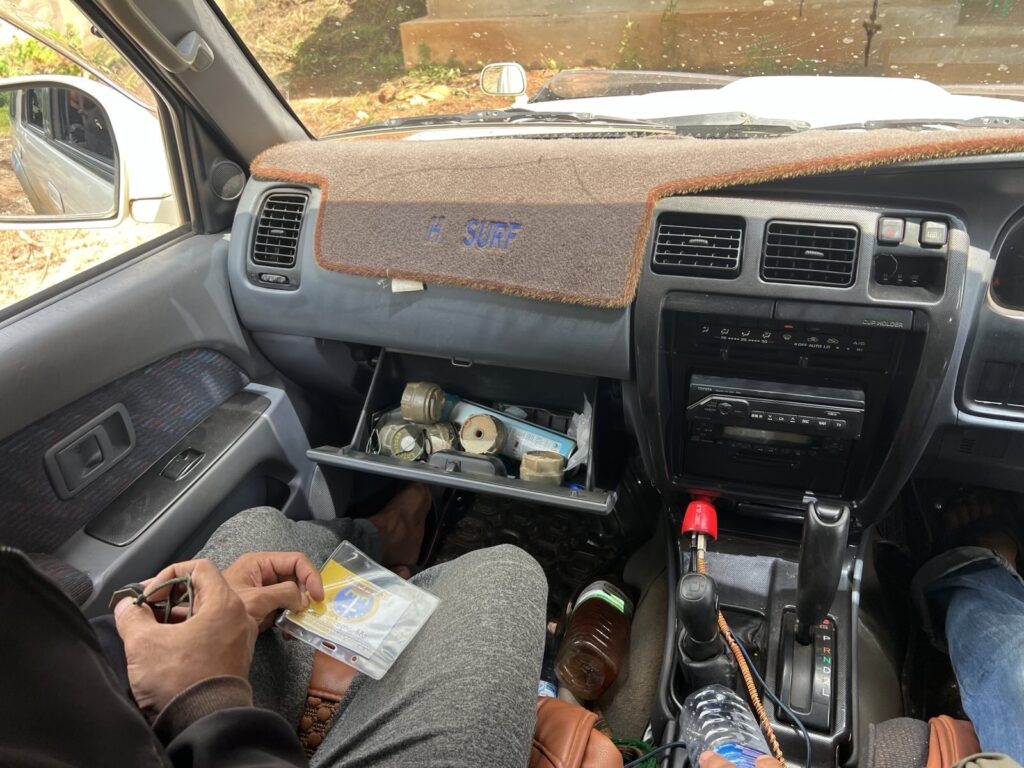
Please join us in praying for protection, wisdom, healing for the people in these affected areas, and funds for local clearance, needed equipment, and survivor care.
“The light shines in the darkness, and the darkness has not overcome it.” John 1:5.
Thank you and God bless you,
FBR team member Jon Moss and the Free Burma Rangers
1© International Campaign to Ban Landmines, Landmine Monitor 2024 (Geneva: ICBL-CMC, November 2024).
2UNICEF Myanmar Humanitarian Situation Report No. 9, 2024, United Nations in Myanmar, December 19, 2024, No. 6, Natmauk Road, Tamwe Township, Yangon, Myanmar, UNICEF, Myanmar.UN.org.
3 Myanmar, Anti-Personnel Mines, Mine Action Review, 2024, MineActionReview.org.
